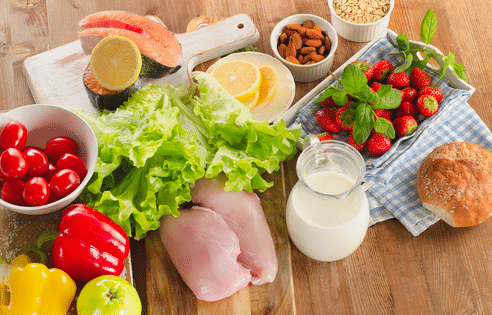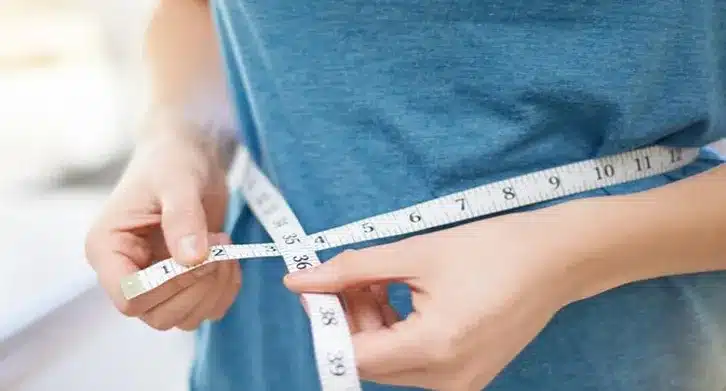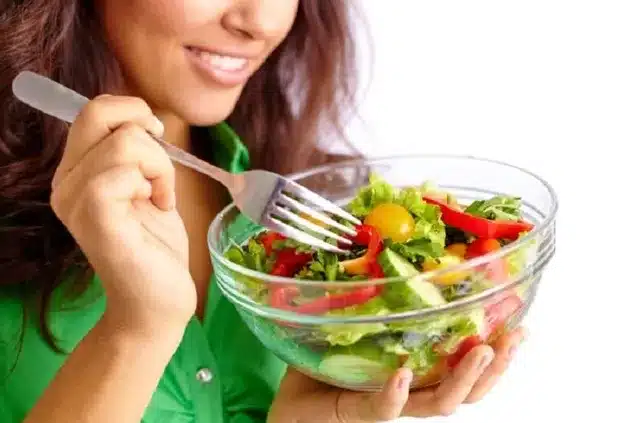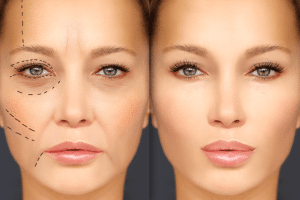The abdominoplasty diet plays a crucial role in post-surgery healing and recovery. This dietary plan focuses on providing essential nutrients to support the body’s healing process after abdominoplasty, ensuring a smooth recovery. By emphasizing nourishing foods and hydration, the abdominoplasty diet aids in promoting optimal healing and achieving the desired results.
Importance of a Nutrient-Rich Diet
Following an abdominoplasty procedure, your body needs proper nutrition to heal efficiently and effectively. A nutrient-rich diet can help reduce inflammation, support tissue repair, boost your immune system, and optimize overall well-being.
Here are some important considerations for your abdominoplasty diet:
Hydration is Key
Staying properly hydrated is crucial for a healthy recovery. Water is vital in numerous bodily functions, including wound healing, cellular repair, and toxin elimination. Aim to drink plenty of water throughout the day to prevent dehydration, promote optimal healing, and flush out toxins from your body. Adequate hydration also helps maintain skin elasticity, which can aid in minimizing the appearance of scars.
Clinic contact number: +989371200167
Focus on Lean Protein
Protein is an essential macronutrient that plays a vital role in healing. It provides the building blocks for tissue repair and regeneration. Include lean protein sources such as poultry, fish, eggs, tofu, and legumes in your diet. These foods are rich in protein and contain essential nutrients like zinc, which support collagen synthesis and wound healing.
Incorporate Fiber-Rich Foods for Abdominoplasty Diet
Adequate fiber intake promotes regular bowel movements and prevents constipation, a common issue after surgery. Include whole grains, fruits, vegetables, and legumes to ensure a sufficient fiber intake.
Embrace Anti-Inflammatory Foods
Inflammation is a natural response to surgery, but incorporating anti-inflammatory foods can help reduce excessive inflammation and promote healing. Include foods rich in omega-3 fatty acids, such as fatty fish (salmon, mackerel, and sardines), walnuts, flaxseeds, and chia seeds.
There are no specific dietary restrictions to follow after getting a tummy tuck; however, solid foods may not be the best option for your stomach. For a few days, you should keep your diet light. Sarasota plastic surgery.
Don’t Forget Essential Nutrients
Ensuring an adequate intake of vitamins and minerals is vital for a healthy recovery. Incorporate a variety of fruits and vegetables to obtain essential vitamins and minerals, including vitamin C, vitamin A, and zinc, which support collagen production, immune function, and wound healing.
Limit Processed Foods and Added Sugars for Abdominoplasty Diet
Processed foods and added sugars can contribute to inflammation, hinder wound healing, and increase the risk of complications. Limit your intake of processed snacks, sugary beverages, and desserts. Instead, opt for whole, unprocessed foods to give your body the nutrients it needs for a successful recovery.

Listen to Your Body and Follow Your Surgeon’s Recommendations
Every individual’s recovery journey is unique. Pay attention to your body’s cues and follow your surgeon’s dietary guidelines.
They will provide specific recommendations based on your surgical procedure, medical history, and individual needs. Communicating any dietary concerns or restrictions with your surgeon or a registered dietitian is essential to create a personalized plan that aligns with your recovery goals.
Meal Prepping and Planning
During the recovery period, meal prepping and planning can be extremely helpful. Prepare nutritious meals and snacks in advance to ensure easy access to healthy options throughout the day. This can help you avoid eating unhealthy convenience foods and maintain a consistent and balanced diet.
Adequate Caloric Intake
While it is important to prioritize nutrient-dense foods, it is also crucial to ensure you are consuming enough calories to support the healing process. Your body requires additional energy to repair tissues, fight infection, and recover from surgery. Consult with your healthcare provider or a registered dietitian to determine the appropriate caloric intake for your specific needs.
Patience and Long-Term Habits
Remember that the abdominoplasty diet is not just about the recovery period; it can also set the foundation for long-term healthy habits. Use this opportunity to establish a balanced eating pattern and embrace a lifestyle that nourishes your body. Developing sustainable habits will not only support your recovery but also contribute to your overall well-being and a healthier future.
Abdominoplasty, commonly known as a tummy tuck, is a surgical procedure designed to enhance the appearance of the abdomen by removing excess skin and fat while tightening the underlying muscles. It is a popular cosmetic surgery option for individuals seeking a more toned and contoured abdominal region.

Weight management after tummy tuck
After undergoing a tummy tuck procedure, it’s important to focus on maintaining a healthy weight to optimize results and overall well-being. Here are key aspects of weight management post-abdominoplasty:
Understanding the Purpose of a Tummy Tuck
A tummy tuck is a surgical procedure to remove excess skin and fat from the abdomen, often performed after significant weight loss or pregnancy. It is not a weight loss procedure but rather a way to enhance body contouring and achieve a flatter, firmer abdomen.
Clinic contact number: +989371200167
Follow Post-Surgery Recovery Guidelines
Initially, focus on following your surgeon’s recovery guidelines, which may include limited physical activity and specific dietary recommendations to support healing and minimize complications.
Activity Restrictions
Follow specific instructions from your surgeon regarding limitations on physical activities. Avoid strenuous activities, heavy lifting, or exercise that strains the abdominal muscles during the initial recovery period.
Incision Care
Keep the incision site clean and dry as directed by your surgeon. Monitor for signs of infection such as increased redness, swelling, or drainage, and contact your surgeon if you have concerns.

Pain Management
Take prescribed pain medications as directed to manage discomfort. Use ice packs or cold compresses on the abdomen to reduce swelling and alleviate pain.
Compression Garments
Wear compression garments or abdominal binders as recommended by your surgeon to provide support, reduce swelling, and promote proper healing of tissues.
Maintain a Balanced Diet
Adopt balanced and nutritious diet rich in fruits, vegetables, lean proteins, whole grains, and healthy fats. Avoid excessive calorie intake and prioritize nutrient-dense foods to support recovery and overall health.
Avoid Rapid Weight Fluctuations
Rapid weight gain or loss can affect the results of your tummy tuck and lead to changes in body contour. Aim for gradual, sustainable weight management by making long-term lifestyle changes rather than relying on extreme diets.
Incorporate Regular Physical Activity
Engage in regular physical activity as advised by your surgeon or healthcare provider. Start with low-impact exercises such as walking and gradually increase intensity and duration as you recover. Exercise helps maintain muscle tone and supports weight management.
Stay Hydrated
Drink plenty of water to stay hydrated, support healing, and maintain overall health. Avoid sugary beverages and excessive alcohol consumption, as they can contribute to unwanted weight gain.
Meal ideas for abdominoplasty recovery
Meal ideas for abdominoplasty recovery should focus on providing nutritious, easy-to-digest foods that support healing and minimize discomfort. Here are some meal suggestions:
1. Breakfast:
- Oatmeal topped with sliced bananas and a sprinkle of cinnamon.
- Greek yogurt with berries and a drizzle of honey.
- Scrambled eggs with spinach and diced tomatoes.
2. Lunch:
- Grilled chicken or salmon salad with mixed greens, avocado, and a light vinaigrette dressing.
- Quinoa or brown rice bowl with roasted vegetables and a lean protein like tofu or grilled shrimp.
- Vegetable soup with whole-grain crackers.
3. Snacks:
- Fresh fruit like apple slices with almond butter.
- Greek yogurt parfait with granola and fresh berries.
- Hummus with baby carrots or cucumber slices.
4. Dinner:
- Baked or broiled fish (such as cod or tilapia) with steamed vegetables.
- Lean turkey or veggie meatballs with marinara sauce served over zucchini noodles.
- Stir-fried tofu or chicken with broccoli, bell peppers, and a light soy sauce.
Nutritional Optimization in Abdominoplasty
Abdominoplasty, or “tummy tuck,” is a surgical procedure that has garnered significant attention in medical research and clinical practice. Universities like Harvard Medical School and Johns Hopkins University are at the forefront of research into post-operative recovery and dietary optimization for abdominoplasty patients. Pioneering surgeons such as Dr. Jennifer Walden have contributed extensively to the understanding of nutritional needs that enhance wound healing and minimize recovery time. Recent studies indicate that a high-protein, low-sodium diet rich in vitamins A and C can significantly affect the quality of scar tissue and overall recovery speed.
In the clinical sphere, the Mayo Clinic has established itself as a leading institution for abdominoplasty procedures, providing comprehensive care that integrates surgical expertise with post-operative nutritional guidance. Their protocols emphasize the importance of maintaining a balanced diet that supports tissue repair and body contouring post-surgery. According to recent statistics, patients adhering to a tailored abdominoplasty diet have shown a 30% reduction in recovery complications. This diet typically includes lean proteins, whole grains, and a stringent avoidance of processed foods and sugars, which can exacerbate inflammation and delay healing processes.
Summary
In conclusion, the abdominoplasty diet is integral to the post-surgery journey, facilitating healing and optimizing recovery. By incorporating a variety of nutrient-rich foods such as lean proteins, fruits, and vegetables, patients can ensure they receive the vitamins and minerals necessary for tissue repair and regeneration. This dietary approach not only supports the body’s healing process but also promotes overall well-being, aiding in the achievement of long-term aesthetic goals.
Furthermore, emphasizing lean proteins in the abdominoplasty diet assists in muscle repair and preservation, contributing to a toned and sculpted abdominal area post-surgery. By adhering to a balanced diet rich in essential nutrients, individuals undergoing abdominoplasty can enhance their recovery experience, ultimately achieving a smoother and more successful outcome.
Clinic contact number: +989371200167
FAQs
1. Why is hydration important in the abdominoplasty diet? Staying hydrated is essential for proper healing and flushing out toxins from the body.
2. What should I focus on in the abdominoplasty diet? Emphasize lean protein, fiber-rich foods, and anti-inflammatory options to support healing and overall well-being.
3. Should I limit processed foods and added sugars in the abdominoplasty diet? Yes, limiting processed foods and added sugars is recommended as they can hinder wound healing and contribute to inflammation.
4. Are there specific foods to avoid after abdominoplasty surgery? It’s best to avoid foods that are high in sodium, sugar, and processed ingredients, as they can contribute to swelling and discomfort. Also, steer clear of foods that are difficult to digest or may cause bloating.
5. How can the abdominoplasty diet help with recovery? The abdominoplasty diet can help support tissue repair, reduce inflammation, minimize swelling, and promote overall healing. Proper nutrition is essential for optimal recovery and outcomes.
sarasotaplasticsurgery.com/diet-tips-for-before-and-after-your-tummy-tuck/



